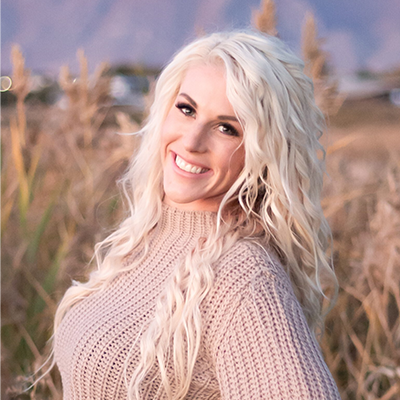Do you ever feel like you are at the mercy of whomever is buying your cattle? Wouldn’t it be nice if we could just tell them what our cost is along with a ten percent markup for profitability?
In reality, we can.
The consequences, however, are not something we get to choose. It is within your right to sell or not sell your cattle at a price offered. But, if you don’t, you will need to find something to do with those cattle. You will need to find another market that commands more money.
Enter the myriad of value-added programs out there. You could work to take out the middleman. But there is retail market risk associated with that decision. So, even though it is your choice of whom to sell and for how much, it often feels like there really isn’t much choice.
In the livestock industry we are starting to see more and more programs and means by which the producer can have price control, or at least a greater share of the market. We have discussed Livestock Risk Protection (LRP Insurance) in other articles.
There are end user market options that are becoming more and more popular with the “ranch to table”, or “gate to plate” trend showing strong demand. This is great; however, most ranchers won’t be able to sell the bulk of their calves that way. The time it takes to fatten animals for slaughter, as well as access to a slaughter facility, create risk and opportunity costs that not every producer can address.
One way to lock in a certain margin of profit is through hedging.
What is Hedging?
First, let’s make it clear that I am not a futures broker. Redd Summit Advisors does not offer brokerage services, and this information is only meant to provide a better understanding of hedging and other price protection options. It would be beneficial to create a relationship with a broker as part of your price risk management strategy.
Traditional hedging is the use of commodities trading as a tool to lock in profit. Really, you are locking in a certain profit margin. Feedlots use this strategy for any cattle that they buy. I had a long conversation with a gentleman who had been a buyer for a large feedlot in the Texas and Oklahoma area. He explained that their strategy was as follows. First, inspect the cattle, then tell the rancher that they could pick the price on the futures board that they liked anytime in the next few months. As soon as the rancher called to lock in a price, the company would turn around and hedge those cattle. By doing this, they locked in that profit margin.
How Does Hedging Work on a Ranch?
Let’s get into the nitty gritty of what hedging looks like! Here are a couple examples.
Assume you buy a group of calves today at $165/cwt. You would then go to your futures broker and buy a counter position. So, you would SELL (short) a position at a similar price. We’ll assume your break even on those calves is $157/cwt. You are locking in an $8 profit margin.
For the next several months, you will ride the ups and downs of the market. When time comes to sell, assume that the market price is now $171/cwt. You have gained $6/cwt in the value of your cattle, but you have lost $6/cwt on you short position in the futures. However, you have still maintained your $8/cwt margin. This does not consider the difference between the cash market and the futures board. That is on purpose. I like to keep things simple!
Now, before you look at that and ask me why you would hedge, let’s look at a drop in the market.
Using the same beginning number of $165/cwt, assume that this time the market drops to $155/cwt. You are down $10/cwt when you sell your calves and below your break even. But your futures position has gained $10/cwt (because short positions make money when the market drops) and you have maintained your profit margin of $8/cwt.
Another hedging tool is the purchase of an option. An option is the right to purchase a futures position at a specified strike price before the expiration date. There is a cost associated with that option. If you choose not to exercise the option, you do not get refunded the fee. In some ways you can think of it like an insurance premium. It is a sunk cost.
In the previous example, you would purchase an option for a futures contract with the same price as above. If the market acted favorably (went down in this example) you would exercise the option and gain the $10/cwt. If the market went up, you would not exercise your right to the position and you would only be out the cost of the option. This would allow you to make money on the higher price for the livestock. This contrasts with the futures contract where you are just locking in a margin.
Is Hedging Right for My Ranch?
Hedging is not right for every operation. For starters, a feeder cattle contract in the futures market is 50,000 pounds. This makes it higher risk than necessary for smaller producers.
In addition, there are financial concerns. The futures market can be volatile, and you must have enough in your account to maintain the required margin to carry the contract even if the value of your contract falls. If the value falls too far, you will be required to add money to your account. That is called a margin call. If you don’t add money in a timely manner, the broker will sell your contract and you will be forced to take a significant loss. It’s not fun. (Or so I’ve heard.)
With options, it is important to know the cost of the option beforehand and evaluate if the cost fits into your operations and risk management budget. As of this writing, an option for an August feeder cattle contract was around $2,000-3,000 depending on the strike price chosen.
Do You Have a Hedging Mentality?
While a traditional hedge may not be a great fit for everyone, the hedging mentality should be part of your thinking. A “hedging mentality” means that you look for ways to mitigate market risk for your operation.
I believe that there is a shift happening in the cattle industry toward better price control for producers. It is not full force now, but between price protection products like Livestock Risk Protection, or Gross Margin Protection and other marketing tactics, cattlemen will be able to make decisions that allow them to profit more.
As always, this means self-inspection. Here are a few questions worth asking yourself:
· Am I forward contracting my cattle?
· Am I providing end user products?
· Am I going to retain ownership of my cattle through to the packers?
· What is my price risk tolerance?
· Am I large enough to hedge, or would another product work better for me?
There is no right answer for each of these. However, the application of a hedging mentality will promote thought and hopefully action that will help move your operation further into the black.
Fortunately, there are a variety of options available to help protect your bottom line, and many don’t require any money upfront. For information on Livestock Risk Protection (LRP Insurance), visit our website here.




.jpeg)
.webp)




